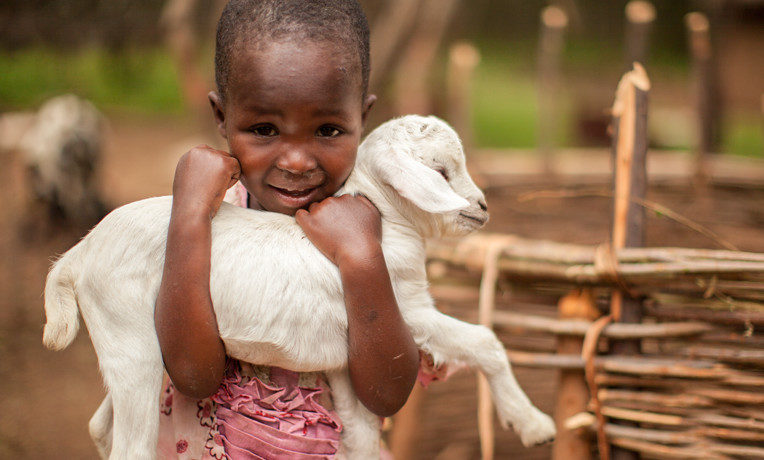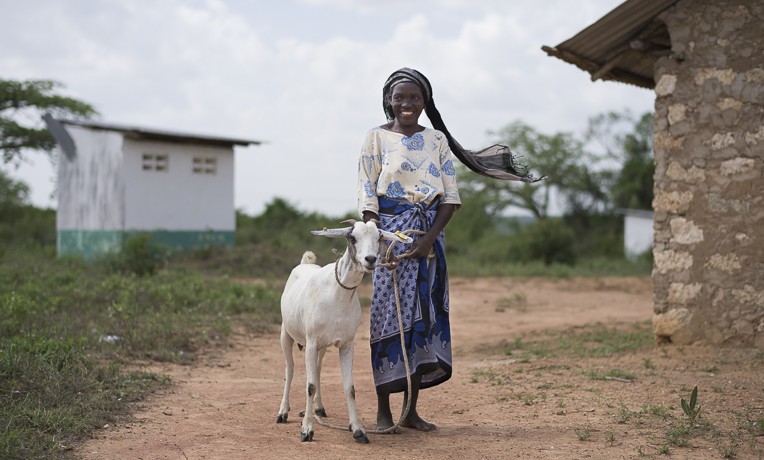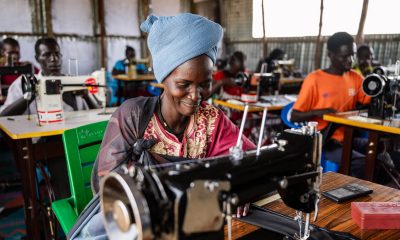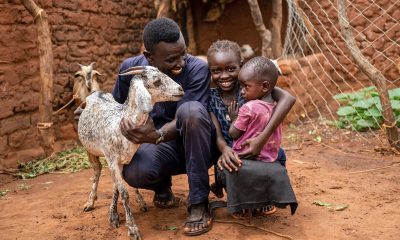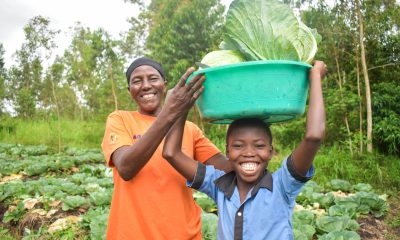How a grandmother in Kenya uses livestock provided by Samaritan's Purse to meet her family's needs
Zacharia Mwasaru is a livestock field officer with Samaritan’s Purse is Kwale, Kenya
It’s mid-morning, and I’m on my way to Kambingu village in Kwale County, Kenya, to do a routine follow-up. I arrive at Kadzo Mwakupha’s home and see her approaching an adjacent shelter with a blue plastic cup in her hand. She’s milking her goat to prepare tea for her daughter-in-law and three grandchildren.
Kadzo is a 52-year-old widow with eight children and three grandchildren. She cultivates approximately two acres of land where she plants maize, pigeon peas, and cassava. This season, like many other people around the area, she didn’t harvest much due to inadequate rainfall.

Many women in Kenya have benefitted from goats. The animals provide them with dairy products that they wouldn’t otherwise have, along with extra income.
In 2012, she was among 15 beneficiaries who received three female and one male Galla goats—animals indigenous to Northern Kenya known as the “milk queen” of these arid and semi-arid areas—from the Samaritan’s Purse livestock project. Our staff members taught her technical training focused on good animal husbandry practices.
Kadzo has adhered to all aspects concerning the project. She takes her goats for routine spraying done once every fortnight as well as scheduled deworming and vaccination.
“I’m happy to see my white goats free from diseases and parasites as compared to other villagers,” she said. “I thank SP for the training and follow-ups, which has enabled me to rear goats, and this changed the way I used to view goat keeping.”
Samaritan’s Purse makes a deal with villagers who receive the livestock. Once their goats reproduce, they must “pay back” three females. These are later distributed to other beneficiaries. Within her group, Kadzo was the first one to pay back her animals.
“I’m happy, for I don’t owe the program a single goat, and for that matter I would really like to increase the size of my herd before I even think of selling the goats,” she said.
She now has 11 goats and has built a raised shelter for them. She said that before she decides to sell them, she plans to construct a dream iron—a roofed house that will enable her to collect clean drinking water. She also plans to purchase oxen and an ox plow in the future, which will allow her to cultivate more land as well as hire it out to other villagers to generate more income for her family.

Children in Kenya benefit from goats, too. The milk they sell allows them to attend school and have quality medical care.
As we conclude our interview and I get onto my motorbike to visit other beneficiaries, Kadzo leaves me with a parting message.
“I’m so grateful to this organization for the assistance they have given to me and our village at large,” she said. “I really can’t remember the last time we took tea without milk. May God bless you all whenever you go assisting the poor and needy.”
